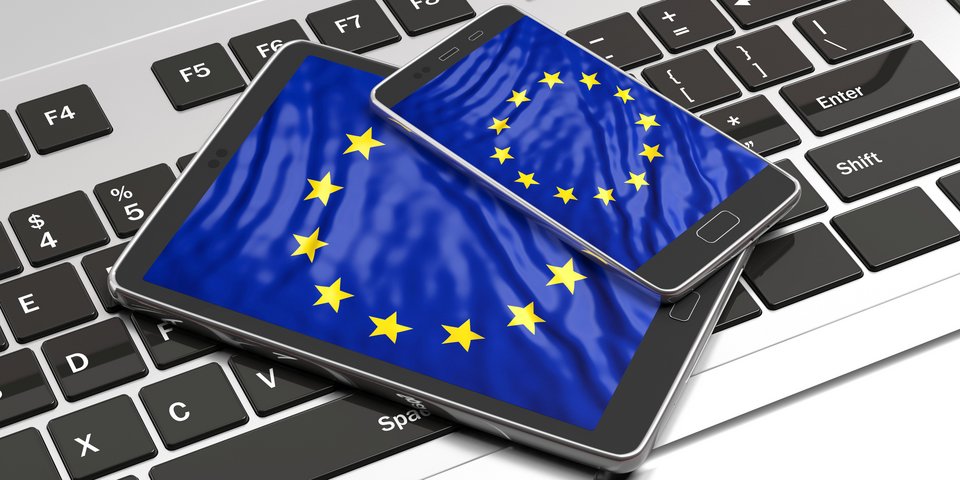 iStockphoto-Rawf8
iStockphoto-Rawf8Social security across borders
The digitisation of social security coordination is progressing slowly.
TH – 01/2022
The free movement of workers, enshrined
long ago in the Treaties of Rome, made it apparent that the various social
security systems, and the resulting different benefit entitlements in the
various Member States, would be an obstacle to the rights of mobile workers. As
a matter of course, it was clear that accompanying measures to safeguard the
free movement of workers would be necessary.
Coordination of social security systems was
chosen as the way to ensure the preservation of acquired social rights.
"Mobile" EU citizens do not lose their social protection if they
temporarily reside in another EU country – be it for private or professional
reasons. Acquired pension rights, for example, can be taken along, and benefits
from health or accident insurance can also be claimed in the host country.
Even today, this often results in delays
and problems. The exchange of information between social insurance agencies as
well as with those entitled to benefits, often still takes place in paper form.
However, EU regulations require the use of digital technologies and the
provision of user-friendly services. In its "Digital Compass", the European Commission has
therefore set out targets for a digital transformation of Europe by 2030. Here,
it is envisaged that all important services (including the electronic patient
file) will be available online. 80% of all EU citizens will then use a digital
identity. At the European level, work has therefore already been underway for
some time on various digitisation projects in the area of social security.
EESSI, and via ESSN...
With the European Exchange of Social
Security Information (EESSI), the European Commission aims to digitise and
facilitate the exchange of data between social security agencies in the EU, the
EFTA states (Iceland, Liechtenstein, Norway and Switzerland) and the United
Kingdom. EESSI is intended to enable a paperless, faster and more efficient
exchange of data between different social security agencies and with national
authorities, such as those for issuing an A1 certificate. Specific cases and
enquiries from insured persons can be processed more quickly and the periods of
entitlement to benefits can be shortened. Social security coordination rules
are to be properly applied, with special precautions to ensure that the data
exchanged is accurate and complete. As of October 2021, the approximately 3,000
affiliated social security organisations from most participating Member States
mark at least a partial success. A full connection is expected by mid-2023.
In contrast, an initiative launched by the
European Commission in 2017 to introduce a European Social Security Number
(ESSN) has since been discarded. The decisive factor here was that the ESSN was
not the most economical solution and that its introduction would have meant too
great an intrusion into personal data.
...to the ESSP: it can also be done differently
In March 2021, the European Commission
proposed the introduction of a European Social Security Pass (ESSP) by 2023 as
an alternative to the ESSN in the Action Plan for the Implementation of the
European Pillar of Social Rights. A different approach is to be adopted here.
While the identification of a person is
done separately via the European Digital Identity (EUid), the ESSP is to be
stored digitally in a so-called "ID Wallet" – an "electronic
wallet". This will then provide real-time data access to all participants.
The ESSP could be based on blockchain technology .
To test the feasibility of a digital
solution for an ESSP, the European Commission launched a pilot project with the
Italian "Instituto Nazionale della Previdenza Sociale" (INPS) early
2021. Alongside other countries, Germany is involved as a consulting expert in
the project scheduled to be completed by 2023. The already launched first phase
runs until 2022 and deals with the digitisation of the procedure for issuing
and checking the PDA1 portable document. In a second phase up to 2023, further
elements such as the European Health Insurance Card (EHIC) will then be tested.
What does the (digital) future look like?
In the future, all communication between
social insurance agencies and with EU citizens, as well as any audits by labour
inspectors will be completely paperless. It should be possible to submit
applications entirely online and to get certificates checked in real time.
To achieve this, there is certainly still a
lot of work to be done at all levels, and considerable investment is needed.
This is because, until now, the EU Member States have had different social
security systems with different administrative structures, digital technologies
and administrative procedures. Full digitisation is an ambitious proposal. One
has to wait and see if the schedule can be met.
You can find the complete ed* newsletter here.
